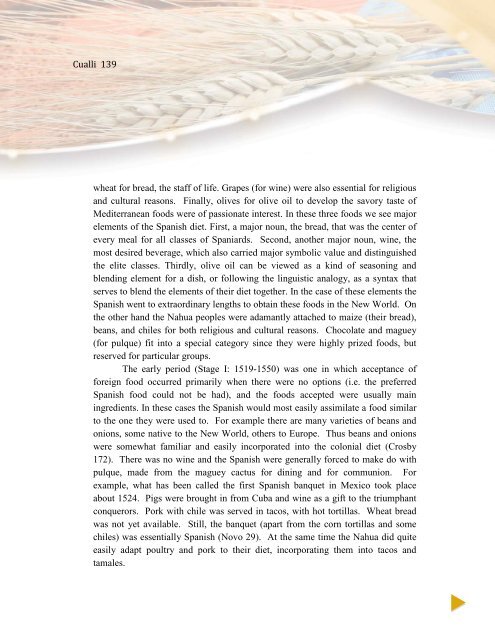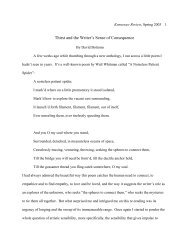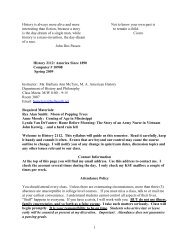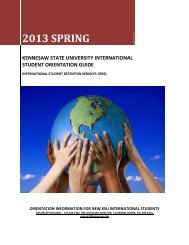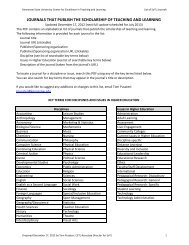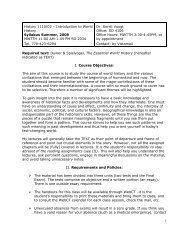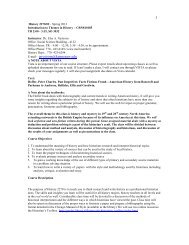Food, Gender and Cultural Hegemony - Kennesaw State University
Food, Gender and Cultural Hegemony - Kennesaw State University
Food, Gender and Cultural Hegemony - Kennesaw State University
Create successful ePaper yourself
Turn your PDF publications into a flip-book with our unique Google optimized e-Paper software.
Cualli 139<br />
wheat for bread, the staff of life. Grapes (for wine) were also essential for religious<br />
<strong>and</strong> cultural reasons. Finally, olives for olive oil to develop the savory taste of<br />
Mediterranean foods were of passionate interest. In these three foods we see major<br />
elements of the Spanish diet. First, a major noun, the bread, that was the center of<br />
every meal for all classes of Spaniards. Second, another major noun, wine, the<br />
most desired beverage, which also carried major symbolic value <strong>and</strong> distinguished<br />
the elite classes. Thirdly, olive oil can be viewed as a kind of seasoning <strong>and</strong><br />
blending element for a dish, or following the linguistic analogy, as a syntax that<br />
serves to blend the elements of their diet together. In the case of these elements the<br />
Spanish went to extraordinary lengths to obtain these foods in the New World. On<br />
the other h<strong>and</strong> the Nahua peoples were adamantly attached to maize (their bread),<br />
beans, <strong>and</strong> chiles for both religious <strong>and</strong> cultural reasons. Chocolate <strong>and</strong> maguey<br />
(for pulque) fit into a special category since they were highly prized foods, but<br />
reserved for particular groups.<br />
The early period (Stage I: 1519-1550) was one in which acceptance of<br />
foreign food occurred primarily when there were no options (i.e. the preferred<br />
Spanish food could not be had), <strong>and</strong> the foods accepted were usually main<br />
ingredients. In these cases the Spanish would most easily assimilate a food similar<br />
to the one they were used to. For example there are many varieties of beans <strong>and</strong><br />
onions, some native to the New World, others to Europe. Thus beans <strong>and</strong> onions<br />
were somewhat familiar <strong>and</strong> easily incorporated into the colonial diet (Crosby<br />
172). There was no wine <strong>and</strong> the Spanish were generally forced to make do with<br />
pulque, made from the maguey cactus for dining <strong>and</strong> for communion. For<br />
example, what has been called the first Spanish banquet in Mexico took place<br />
about 1524. Pigs were brought in from Cuba <strong>and</strong> wine as a gift to the triumphant<br />
conquerors. Pork with chile was served in tacos, with hot tortillas. Wheat bread<br />
was not yet available. Still, the banquet (apart from the corn tortillas <strong>and</strong> some<br />
chiles) was essentially Spanish (Novo 29). At the same time the Nahua did quite<br />
easily adapt poultry <strong>and</strong> pork to their diet, incorporating them into tacos <strong>and</strong><br />
tamales.<br />
[Type text]


